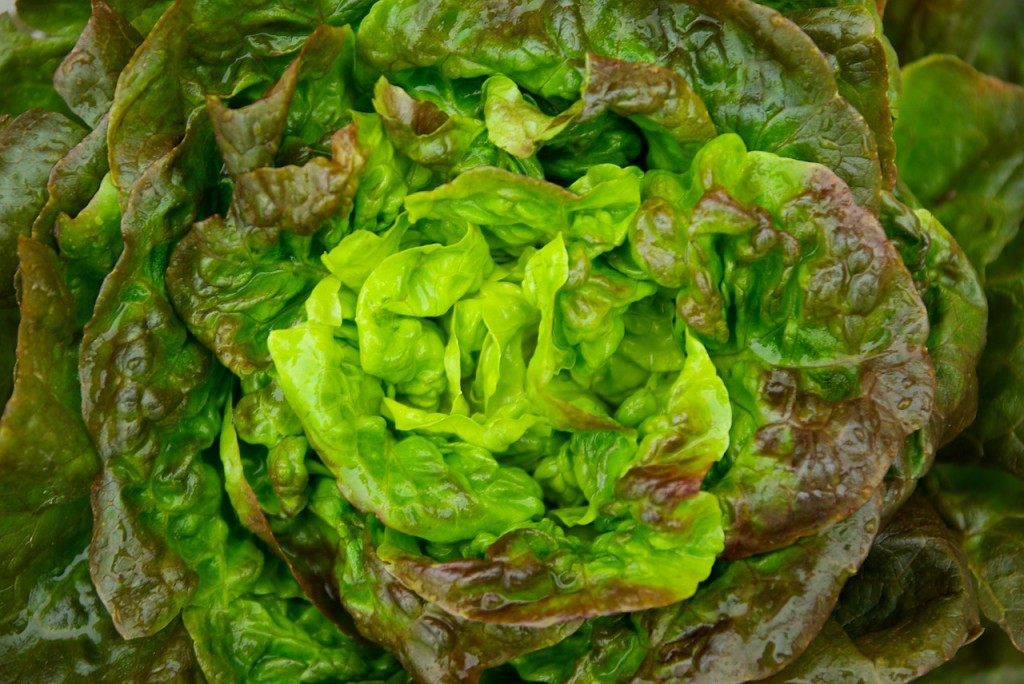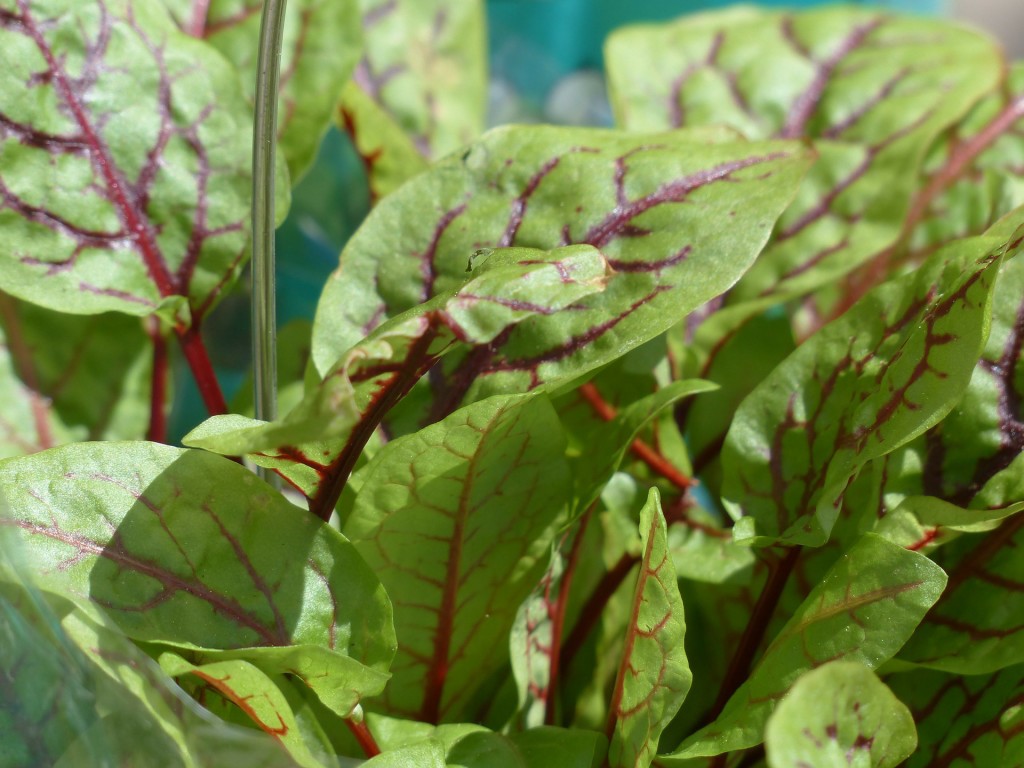But not all greens are created equal.
Some of the first greens up in the spring—like arugula, dandelion and sorrel—are much more bitter than others. And, by their bitter nature, they are not only nutritious, but also promote good digestion, help us to suppress appetite and tamp down sugar cravings.
 Still, bitter can be hard to swallow. Other than mixing these greens with milder ones in a salad, what can we do make them more palatable? First, let’s take a look at why you should even try with a look at how good greens are for you.
Still, bitter can be hard to swallow. Other than mixing these greens with milder ones in a salad, what can we do make them more palatable? First, let’s take a look at why you should even try with a look at how good greens are for you.
Nutrition
Bitter greens are loaded with dietary fiber and phytonutrients that protect the plant from the sun’s damaging rays. Antioxidants, for example, are abundant in leafy green plants. They protect the plant’s DNA from the oxidative stress of photosynthesis, the process by which a plant basically harvests the sun’s energy to split water molecules apart into hydrogen and oxygen atoms in order to make sugars (McGee, 2007).
When we eat these leaves, our bodies use the antioxidants to protect us from free radical activity—or oxidation—in our bodies. Antioxidants available in leafy greens include the carotenoids, beta-carotene, lutein and zeaxanthin, and chlorophyll, as well as vitamins C and E (McGee, 2007).
In addition to antioxidants, leafy greens contain thousands of different “phenolic” compounds. They are what give the plant color, fight off microbial threats and attract and repel animals. All fruits, vegetables, and grains contain some phenolic compounds, which, when eaten, offer similar protection in our bodies. For example, arugula and mustard greens, like other members of the cabbage family, contain glucocinolates, a class of phytonutrients, with cancer fighting properties (McGee, 2007, Masé).
Bitter Medicine
Not many of us are wired to love bitter. In human evolution the  bitter flavor traditionally meant poison. Bitter foods activate special taste receptors—TR2 receptors—in the mouth and other parts of the digestive tract. The T2R receptors send messages activating an increased production of saliva, stomach acid and bile. Because it is seen as a challenge to the system, foods with bitter flavors signal the digestive tract to slow down and digest food more completely (Masé, 2013).
bitter flavor traditionally meant poison. Bitter foods activate special taste receptors—TR2 receptors—in the mouth and other parts of the digestive tract. The T2R receptors send messages activating an increased production of saliva, stomach acid and bile. Because it is seen as a challenge to the system, foods with bitter flavors signal the digestive tract to slow down and digest food more completely (Masé, 2013).
Promising studies show a connection between T2R receptor stimulation and the modulations of physiological processes, largely in the liver, that keep blood glucose levels under control (Masé, 2013 & Dotson, et. al 2008). Bitter plants also stimulate the intestinal secretion of polypeptide YY, a hormone thought to be involved in controlling human appetite (Masé, 2013).
Bitter greens can also help ease sugar cravings. While simple sugars make our brains happy for a while, they do nothing to activate the gut—especially when eaten alone in foods void of fiber or bitter flavors that can stimulate digestive processes and help our bodies deal with glucose load. This is why some people might suffer from bloating, gas or odorous gas when sweets are overdone (Masé, 2013).
Introducing bitter greens to someone with sugar addiction will help stimulate taste receptors that they may not be using and change their digestion, appetite and eating habits. If you’ve overdone the sweet temptations lately, eating some bitter greens may be just the medicine you need to improve digestion and combat those wicked cravings!
Five Ways To Use Bitter Greens
Steam sauté your greens to use as a side dish or as a complete meal. Serving your greens with a little fat will make the lutein and other carotenes more available to your body. The recipe below, inspired by a recipe found in Moosewood Restaurant Cooks at Home (Moosewood collective, 2013) is an extremely versatile recipe that can make a great entrée, or reduce or eliminate the legumes and serve it as a side dish.
Black-Eyed Peas With Spinach
1 medium onion, chopped
1 tablespoon vegetable oil
10 ounces fresh kale, rinsed, stemmed, and coarsely chopped
1-1/2 cups drained black beans (one 13-ounce can)
ground black pepper to taste
pinch of cayenne or crushed red pepper flakes (optional)In a large skillet, sauté the onions in the oil for a few minutes until soft. Add the kale to the skillet. Stir for a minute, or two until it wilts. Add the black beans, black pepper, and cayenne if desired. Bring to a simmer on medium heat. Serve right away.
For variety, follow the instructions above using the same amount of onion, oil, salt, black and cayenne pepper and use arugula instead of kale, and garbanzo beans instead of black beans. Be sure to give it a taste before you add the black or cayenne pepper—you might find the arugula peppery enough. If the arugula is too sharp, sprinkle a bit of Parmesan cheese when serving to soften the flavors.
Pesto is always a great way to use greens. Basil usually comes to mind for pesto, but when you think outside the box, arugula, young dandelion greens, cilantro and parsley all become fantastic candidates. Here’s another great recipe based on one found in This Is A cookbook: Recipes For Real Life (Sussman, M. & Sussman, 2012). You may have to modify the recipe a bit to balance flavors.
For example, when the arugula is sharp and spicy, or when I use a dandelion green, I will use a sweeter nut — like cashew or pistachio – and go heavier on the salt.
Arugula Pesto
1/2 cup pistachio pieces (or
1/2 cup walnuts, or 1/2 cup cashew)
1 garlic clove, minced
2 cups packed arugula leaves (or 2 cups dandelion leaves)
1/2 cup freshly grated Parmesan cheese (or 1/2 cup Romano cheese)
1 teaspoon sea salt
1 cup extra-virgin olive oilCombine the walnuts, garlic, arugula, Parmesan and salt in a food processor. Pulse to blend.
With the machine running, Open the food tube and pour the olive oil in a slow, steady stream. Process until smooth. Stop to scrape down the sides of the bowl as needed. Taste and adjust the seasonings.
Make a sandwich filler for lunch with a little kick. If you have a mild cheese like Muenster or Swiss, adding some mustard greens, sorrel or arugula and tomato slices will serve as a great contrast and make the sandwich much more interesting. Remember, that pesto is not just a pasta topper! You can also use the pesto recipe above and spread your bitter green pesto on your sandwich to get the same effect.
Add greens to your soups. Just as I’m about to serve a bowl of soup, I throw in some greens. They wilt nicely and add some flavor. If you add them too early, they will pretty much dissolve and offer very little contrast. That said, you really can’t make a mistake here: If they do dissolve, all of their beneficial nutrients will have leached into the soup!
Green smoothies are great if you’re trying to get yourself—or your children—to eat some greens. But don’t start with the most bitter greens! Start with spinach or chard and add two kinds of fruit, like apple and banana or pineapple and pear. If you are an experienced green smoothie drinker and usually use milder greens like spinach, try adding a little arugula and increase the amount each time you make one as you get accustomed to the bitter flavor. If you want to curb bitter, you don’t have to add more sweet: Try adding lemon or lime and taste as you go to see if you need more.
Basic Bitter Green Smoothie
2 cups arugula
1/2 cup yellow bell pepper
1 orange peeled and seededPlace all ingredients in a blender. Mix until smooth. If taste is too bitter, add a pinch of salt and 1/4 banana.
Though it may take a while to get used to the flavor of bitter greens, it’s worth the effort! Adding greens to your diet helps to curb sugar cravings, improve digestion and supports liver detoxification. Fresh greens are always best – so get planting! Even if you don’t have garden space, many varieties (arugula, parsley and cilantro) will flourish in a window box.
References
Albi, J. & Walthers, C. (1996). Greens, Glorious Greens: More Than 140 Ways To Prepare All Those Great-Tasting, Super-Healthy, Beautiful Leafy Greens. St Martin’s Press: New York, NY.
Boutenko, V. (2009). Green Smoothie Revolution: The Radical Leap Towards Natural Health. North Atlantic Books: Berkeley, CA.
Dotson, C. D., Zhang, L., Xu, H., Shin, Y.-K., Vigues, S., Ott, S. H., … Munger, S.D. (2008). Bitter taste receptors influence glucose homeostasis. PLoSONE, 3(12), e3974. doi:10.1371/journal.pone.0003974
Frawley, D. & Lad, V. (1986). The Yoga of Herbs: An Ayurvedic Guide to Herbal Medicine. Publisher: Lotus Press: Twin Lakes, WI
Kessler, D.A. (2010). The End of Overeating: Taking Control of the Insatiable American Appetite. Rodale, Inc.: New York, NY.
Masé, G. (2013). The Wild Medicine Solution: Healing with Aromatic, Bitter and Tonic Plants. Healing Arts Press: Rochester, VT.
McGee, Harold (2007). On Food and Cooking: The Science and Lore of The Kitchen. Scribner. Kindle Edition.
Moosewood Collective. (2013). Moosewood Restaurant Cooks at Home. Retrieved from Amazon.com.
Robinson, J. (2013). Eating on the wild side: The mission link to optimal health. Little Brown & company: New York, NY.
Sussman, M. & Sussman, M. (2012). This is a Cookbook: Recipes for Real Life. Weldon Owen, Inc. Published by Olive Press.
Wood, R. (2010). The New Whole Foods Encyclopedia (fully revised & updated). Penguin Books: New York, NY.



